Fast computing with light fields
Researchers at Rochester and Erlangen use laser pulses for ultrafast signal processing.
Simulating complex scientific models on the computer or processing large volumes of data such as editing video material takes considerable computing power and time. Researchers from the Friedrich-Alexander-University Erlangen-Nürnberg (FAU) and a team from the University of Rochester in New York have demonstrated how the speed of fundamental computing operations could be increased in future to up to a million times faster using laser pulses.
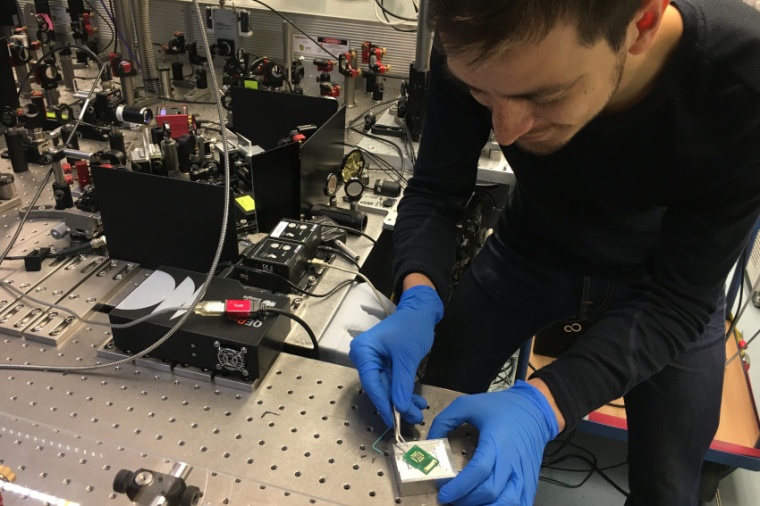
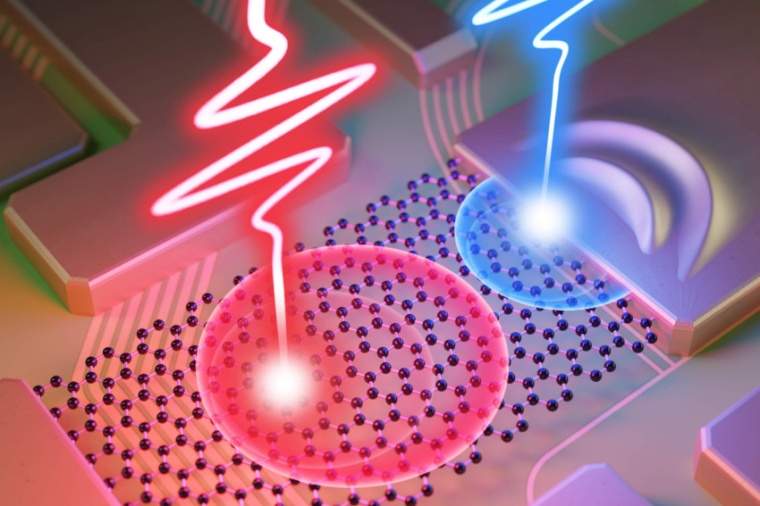
Physicists are working hard to control electronics with light waves. The oscillation of a light wave takes approximately one femtosecond. Controlling electrical signals with light could make the computers of the future over a million times faster, which is the aim of petahertz signal processing or light wave electronics. The researchers have been investigating how light waves can be converted to current pulses for several years. In their experiments, the researchers illuminate a structure of graphene and gold electrodes with ultrashort laser pulses. The laser pulses induce electron waves in the graphene, which move toward the gold electrodes where they are measured as current pulses and can be processed as information.
Depending on where the laser pulse hits the surface, the electron waves spread differently. This creates two types of current pulses – real and virtual charges. “Imagine that graphene is a pool and the gold electrodes are an overflow basin. When the surface of the water is disturbed, some water will spill over from the pool. Real charges are like throwing a stone into the middle of the pool. The water will spill over as soon as the wave that has been created reaches the edge of pool, just like electrons excited by a laser pulse in the middle of the graphene,” explains Tobias Boolakee, researcher at the Chair of Laser Physics. “Virtual charges are like scooping the water from the edge of the pool without waiting for a wave to be formed. With electrons, this happens so quickly that it cannot be perceived – a virtual charge. In this scenario, the laser pulse would be directed at the edge of the graphene right next to the gold electrodes.” Both virtual and real charges can be interpreted as binary logic – 0 or 1.
The laser physicists have been able to demonstrate with their experiments for the first time that this method can be used to operate a logic gate – a key element in computer processors. The logic gate regulates how the incoming binary information (0 and 1) is processed. The gate requires two input signals, here electron waves from real and virtual charges, excited by two synchronized laser pulses. Depending on the direction and strength of the two waves, the resulting current pulse is either aggregated or erased. Once again, the electrical signal that the physicists measure can be interpreted as binary logic, 0 or 1.
“This is an excellent example of how basic research can lead to the development of new technology. Through fundamental theory and its connection with the experiments, we have uncovered the role of real and virtual charges which has opened the way to the creation of ultrafast logic gates,” says Ignacio Franco from the University of Rochester. “It will probably take a very long time before this technology can be used on a computer chip. But at least we know that light wave electronics is a feasible technology,” adds Tobias Boolakee. (Source: FAU / U. Rochester)
Links: Laser Physics (P. Hommelhoff), Friedrich-Alexander-Universität Erlangen-Nürnberg, Erlangen, Germany • Franco Group, Dept. of Physics, University of Rochester, Rochester, USA
Company
Friedrich-Alexander-Universität Erlangen-Nürnberg (FAU)Schloßplatz 4
91054 Erlangen
Germany
most read
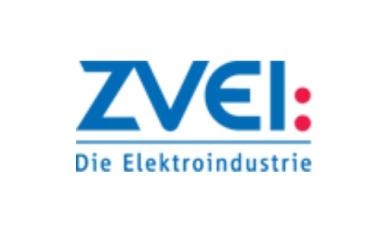
Electrical and digital industry calls for strategy for Europe's digital sovereignty
The French and German electrical and digital industry associations, FIEEC and ZVEI, are calling for a proactive strategy for Europe's digital sovereignty.

Change in management at Stemmer Imaging: Arne Dehn steps down
New interim CEO Paul Scholten takes over management
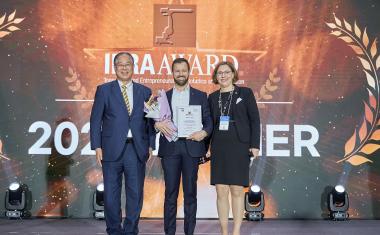
Otto wins IERA Award 2025
Rockwell's robot is an AMR solution that can transport heavy loads in factories and operate in robot fleets of over 100 units.
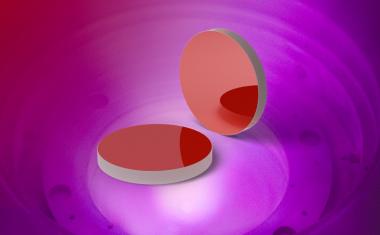
Laser Components: customized laser optics since 1986
Laser Components began coating individual laser optics almost 40 years ago. These are used in laser processes in numerous industries, including medicine, defense and aerospace.

Softbank acquires ABB's robotics business
The Softbank Group has reached a definitive agreement to acquire ABB's robotics business.






